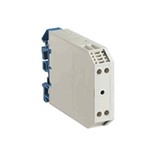The narrowest conducting wires in silicon ever made – just four atoms wide and one atom tall – have been shown to have the same electrical current carrying capability of copper, according to a new study published this month in the journal Science.
Despite their astonishingly tiny diameter – 10,000 times thinner than a human hair – these wires have exceptionally good electrical properties, raising hopes they will serve to connect atomic-scale components in the quantum computers of tomorrow.
"Interconnecting wiring of this scale will be vital for the development of future atomic-scale electronic circuits," according to the lead author of the study, Bent Weber, a PhD student in the ARC Centre of Excellence for Quantum Computation and Communication Technology at the University of New South Wales, in Sydney, Australia.
The wires were made by precisely placing chains of phosphorus atoms within a silicon crystal, according to the study, which includes researchers from the University of Melbourne and Purdue University in the US.
The researchers discovered that the electrical resistivity of their wires – a measure of the ease with which electrical current can flow – does not depend on the wire width. Their behaviour is described by Ohm’s law, which is a fundamental law of physics taught to every high school student.
"It is extraordinary to show that such a basic law still holds even when constructing a wire from the fundamental building blocks of nature – atoms," Weber said.
The discovery demonstrates that electrical interconnects in silicon can shrink to atomic dimensions without loss of functionality, the Centre’s Director and leader of the research, Professor Michelle Simmons, said.
"Driven by the semiconductor industry, computer chip components continuously shrink in size allowing ever smaller and more powerful computers," Simmons said.
"Over the past 50 years this paradigm has established the microelectronics industry as one of the key drivers for global economic growth. A major focus of the Centre of Excellence at UNSW is to push this technology to the next level to develop a silicon-based quantum computer, where single atoms serve as the individual units of computation.
"It will come down to the wire. We are on the threshold of making transistors out of individual atoms. But to build a practical quantum computer we have recognised that the interconnecting wiring and circuitry also needs to shrink to the atomic scale."
Creating such tiny components has been made possible using a technique called scanning tunnelling microscopy.
"This technique not only allows us to image individual atoms but also to manipulate them and place them in position," Weber said.















